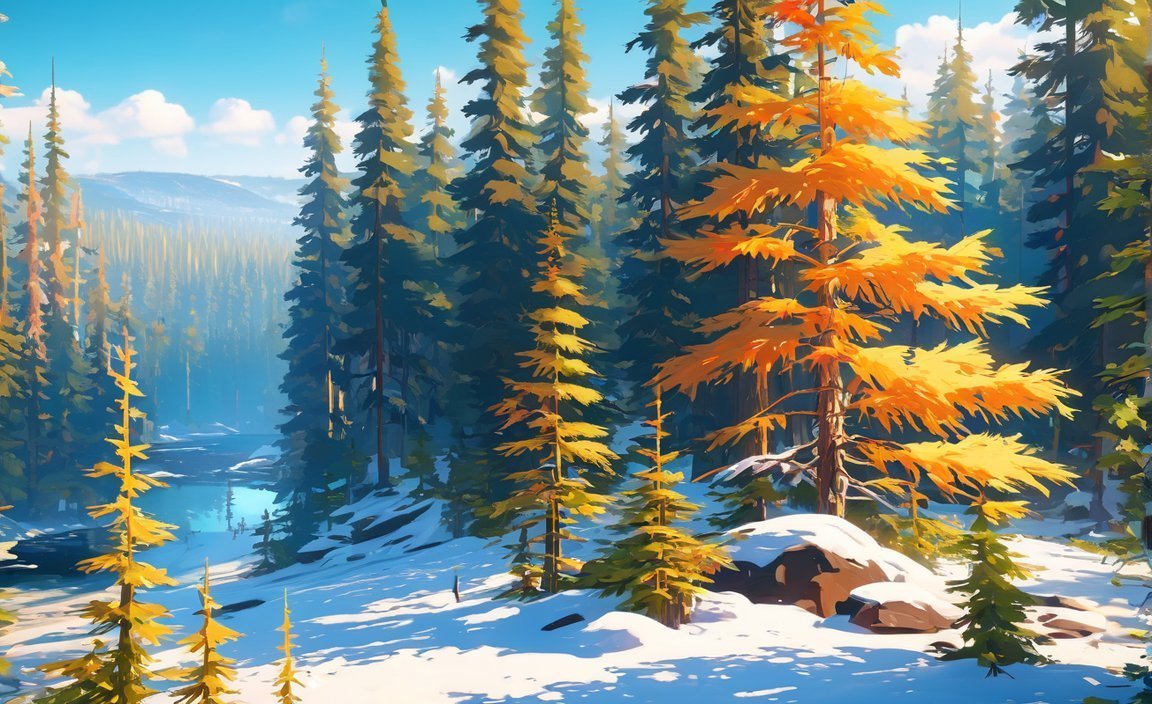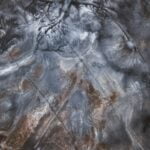Unveiling the Wonder: 10 Fascinating Facts about the Taiga Biome

Welcome to an awe-inspiring journey through the enchanting world of the taiga biome, where nature’s breathtaking beauty and hidden mysteries await. In this tantalizing article, we unravel the secrets of this vast northern forest, presenting 10 intriguing facts that shed light on its unique characteristics and ecological significance. From its mesmerizing biodiversity to its essential role in global climate regulation, join us as we delve into the wonders of the taiga and discover why it continues to captivate the hearts and minds of nature enthusiasts worldwide.
Key Takeaways:
1. The taiga is one of the world’s Intact Forest Landscapes (IFLs), remaining largely undisturbed by human activities.
2. The soil in the taiga biome contains permafrost, leading to poor soil quality and difficulty for plant roots.
3. The taiga experiences both the midnight sun and polar night phenomena, with extended periods of darkness during winter and continuous sunlight during summer.
4. The taiga has a dry climate with low precipitation, mostly in the form of snow, which provides moisture for plant life.
5. The taiga features bogs and peatlands, crucial for carbon storage and regulating the global climate.
6. Despite having poor soil, the taiga supports a rich plant life due to specialized adaptations of coniferous trees to harsh conditions.
7. The taiga is one of the largest biomes on Earth, spanning over 11 million square miles across North America, Europe, and Asia.
8. The taiga biome is home to various wildlife species, such as moose, wolves, bears, and lynx, with unique adaptations for survival in the cold environment.
9. The taiga plays a significant role in the global carbon cycle by storing vast amounts of carbon, aiding in mitigating climate change.
10. The taiga serves as an essential habitat for migratory birds, attracting diverse bird species during the warmer months.
10 Interesting Facts About the Taiga Biome
The taiga biome is a vast expanse of northern forest that is home to a rich array of flora and fauna. From its unique climate to its crucial role in the global carbon cycle, the taiga holds many fascinating secrets. Join me as we delve into the wonders of this extraordinary ecosystem.
Fact 1: Intact Forest Landscapes
The taiga forms one of the world’s Intact Forest Landscapes (IFLs), large areas of forest that remain mostly untouched by human activities. These pristine landscapes provide refuge for countless plant and animal species, making the taiga a biodiversity hotspot.
Fact 2: The Permafrost Beneath
Beneath the taiga forest lies permafrost, which is permanently frozen ground. This frozen soil makes it challenging for plant roots to penetrate, resulting in poor soil quality in the taiga. However, nature has found ingenious ways to adapt to these conditions.
Fact 3: Midnight Sun and Polar Night
Parts of the taiga experience both the midnight sun and polar night phenomena. During the summer months, the sun remains visible around the clock, providing continuous daylight. In contrast, the winter months bring extended periods of darkness, creating a stark contrast of light and shadow.
Fact 4: Low Precipitation and Dry Climate
The taiga generally receives low precipitation, contributing to its dry climate. However, what little precipitation it does receive comes mainly in the form of snow. This accumulation of snow provides moisture for plant life, sustaining the intricate ecosystem of the taiga.
Fact 5: Bogs and Peatlands
The taiga is home to bogs and peatlands, wetland areas characterized by the accumulation of dead plant material. These unique habitats play a crucial role in carbon storage and help regulate the global climate by sequestering carbon dioxide from the atmosphere.
Fact 6: Plant Adaptations
Despite its poor quality soil, the taiga boasts a surprisingly rich plant life. The cold temperatures and short growing season have led to the evolution of specialized plant adaptations. Coniferous trees, such as spruce and fir, dominate the taiga landscape with their ability to survive and thrive in harsh conditions.
Fact 7: Size Matters
Stretching across the northern parts of North America, Europe, and Asia, the taiga is one of the largest biomes on Earth. Spanning over 11 million square miles, the taiga is a colossal forest that holds immense ecological significance.
Fact 8: Wildlife and Animal Adaptations
The taiga is home to a diverse array of wildlife and animal adaptations. Species such as moose, wolves, bears, and lynx have developed thick fur and specialized behaviors to survive in the harsh taiga environment. These remarkable adaptations enable them to navigate the challenging conditions and thrive in this northern wilderness.
Fact 9: A Key Player in the Carbon Cycle
The taiga plays a significant role in the global carbon cycle. The vast forests of the taiga store vast amounts of carbon, helping mitigate climate change by reducing greenhouse gas emissions. Their ability to absorb and store carbon dioxide is crucial for maintaining the delicate balance of our planet’s climate system.
Fact 10: A Haven for Migratory Birds
The taiga serves as an essential habitat for migratory birds. Many bird species undertake long-distance journeys to breed and feed in the taiga during the warmer months. This vast forest provides abundant food resources and nesting sites, making it a haven for these magnificent avian travelers.
In conclusion, the taiga biome is a captivating ecosystem teeming with unique qualities. From its intact forest landscapes to its vital role in the carbon cycle, the taiga holds an array of intriguing secrets waiting to be explored. So join me in uncovering the wonders of this remarkable northern forest.
Check out these 10 interesting facts about biomes! Discover the diverse ecosystems of our planet. 10 interesting facts about biomes
Did you know that condensation is responsible for the water cycle? Learn more fascinating facts about this natural process. 10 interesting facts about condensation
Delve into the fascinating world of marine biology and explore the wonders of the ocean. Uncover intriguing facts about marine creatures and their habitats. 10 interesting facts about marine biology
Immerse yourself in the awe-inspiring beauty of marine life. From colorful coral reefs to majestic whales, discover the wonders that reside beneath the ocean’s surface. 10 interesting facts about marine life
Parliament House is more than just a government building. Uncover interesting facts about its architecture, history, and significance. 10 interesting facts about Parliament House
Step into the heart of Australia’s capital and learn intriguing facts about Parliament House Canberra. Discover its iconic features and political importance. 10 interesting facts about Parliament House Canberra
Dive into the fascinating world of ponds and unlock the secrets of these small bodies of water. From diverse ecosystems to unique wildlife, there’s so much to explore. 10 interesting facts about ponds
Take a journey to the captivating savanna biome, where vast grasslands and diverse wildlife await. Learn intriguing facts about this unique ecosystem. 10 interesting facts about savanna biome
Delve into the enchanting world of sea creatures and uncover their remarkable adaptations. From colorful fish to mysterious deep-sea creatures, there’s so much to discover. 10 interesting facts about sea creatures
Plunge into the depths of the ocean and explore the wonders of sea life. Delight in fascinating facts about marine organisms and the interconnectedness of marine ecosystems. 10 interesting facts about sea life
3. Biodiversity and Species Adaptations in the Taiga
The Taiga biome, spanning over 11 million square miles, is not only one of the largest biomes on Earth but also a remarkable haven of biodiversity. This vast northern forest, which stretches across North America, Europe, and Asia, harbors a diverse array of plants and animals, each with unique adaptations to survive the harsh and cold conditions of this ecosystem.
Let’s delve into the wondrous realm of the Taiga and explore the intricate web of life that thrives within it:
Adaptive Conquerors: In this challenging environment, coniferous trees reign supreme. Species like spruce, pine, and fir have evolved needle-like leaves to minimize water loss and withstand freezing temperatures. Their conical shape enables the trees to shed accumulated snow easily.
Life in Slow Lane: The Taiga’s short growing season presents a challenge for vegetation. To adapt, many plants in the Taiga, such as mosses, lichens, and understory plants, have embraced a slow and steady approach. They have evolved to grow at a leisurely pace, making the most of the limited time available for photosynthesis.
Camouflage Masters: Survival in the Taiga often relies on remaining unseen. Animals such as lynx, snowshoe hares, and grouse have developed fantastic camouflage, blending seamlessly with the winter landscape. This allows them to go about their daily activities without attracting unwanted attention from predators.
Cozy Dwellers: The permafrost lurking beneath the Taiga affects not only vegetation but also animal life. Certain species, including moose and reindeer, have adapted to dig through the snow and access the lichens and mosses that lie underneath, providing them a reliable food source during the long, harsh winters.
Silent Hunters: Wolves call the Taiga home and are known for their incredible hunting prowess. These apex predators have highly developed senses, enabling them to locate their prey even in the vast expanse of the Taiga. Their thick fur protects them from the biting cold, while their keen eyes and acute hearing help them navigate effectively in search of food.
Hibernation Retreats: Bears, such as the famous grizzly and the elusive Siberian bear, make the most of the Taiga’s abundant food resources during the summer. As winter approaches, they retreat to cozy dens and enter a state of hibernation. Slowing their metabolism, they conserve energy until spring arrives, when they emerge once again to roam the Taiga.
Siberian Tigers: Agile Survivors: The Taiga is also the territory of the Siberian tiger, the largest cat on Earth. Their muscular build and thick fur allow them to withstand the extreme cold, while their agility and stealth help them navigate through the dense forests as they hunt for their prey.
Wildlife Migrations: The Taiga serves as a vital stopover for numerous migratory bird species during their long journeys. These avian travelers find refuge in the Taiga’s abundant food sources and safe habitat, making it a pivotal location for their survival and successful breeding.
Intertwined Interactions: The Taiga’s biodiversity is not limited to large animals; it extends to the often-overlooked microorganisms and insects. These tiny creatures play crucial roles in maintaining the delicate balance of the ecosystem, pollinating plants, decomposing organic matter, and contributing to the overall health of the Taiga.
A Web of Life: Biodiversity in the Taiga is interconnected; each species relies on the other for its existence and survival. Through intricate relationships and dependencies, the Taiga biome boasts a delicate harmony that demonstrates the resilience and adaptability of nature’s designs.
Key Takeaways:
– The Taiga biome is home to a rich array of plant and animal species, each with unique adaptations to survive the harsh conditions.
– Coniferous trees dominate the Taiga, with needle-like leaves to minimize water loss and withstand freezing temperatures.
– Many plants in the Taiga grow at a slow pace, making the most of the limited growing season.
– Animals in the Taiga rely on camouflage to blend in with the environment and stay hidden from predators.
– Some species have adapted to the permafrost by digging through the snow to access food sources.
– Wolves, bears, and Siberian tigers are among the top predators in the Taiga, each with their own specialized adaptations.
– The Taiga is an important stopover for migratory birds during their journeys.
– Microorganisms and insects play vital roles in the Taiga’s ecosystem, contributing to its overall health.
– Biodiversity in the Taiga is interconnected, with each species relying on others for survival.
Sources:
– Discover Walks:
– Fact Night:
4. Importance of the Taiga in the Global Carbon Cycle
The taiga biome, also known as the boreal forest, plays a crucial role in the global carbon cycle. This vast northern forest, covering approximately 17% of Earth’s land surface area, holds immense importance in maintaining the balance of carbon dioxide levels in the atmosphere. Let’s dive deeper into the significance of the taiga in the global carbon cycle.
Carbon Sequestration in the Taiga
The taiga serves as a powerful carbon sink, capturing and storing large amounts of carbon dioxide. Through the process of photosynthesis, taiga trees absorb carbon dioxide and release oxygen, aiding in the regulation of global climate patterns. The unique characteristics of the taiga, such as its ability to withstand natural disturbances like fires and insect outbreaks, contribute to its high carbon sequestration capacity.
Massive Carbon Storage Potential
With an estimated 18% of Earth’s total biomass found in the taiga biome, it holds vast amounts of stored carbon. These forests are home to millions of trees, including coniferous species like spruce, pine, and fir, which have adapted to minimize water loss and withstand freezing temperatures. These trees lock away substantial amounts of carbon within their biomass, roots, and soil, making the taiga an essential reservoir of carbon storage.
Mitigating Climate Change
By sequestering carbon dioxide, the taiga plays a crucial role in mitigating climate change. The carbon stored in taiga forests remains trapped for extended periods, preventing its release into the atmosphere as greenhouse gases. Protecting and conserving the taiga becomes vital in reducing carbon emissions and combating global warming.
Soil Stability and Erosion Prevention
In addition to carbon sequestration, the taiga biome helps maintain soil stability and prevent erosion. The vegetation and tree roots in the taiga act as a natural barrier against the impact of rainfall and snowmelt. They provide stability to the soil, preventing erosion and the loss of valuable nutrients. This stability contributes to the long-term sustainability of the taiga ecosystem.
Key Takeaways:
- The taiga biome is a vital component of the global carbon cycle, acting as a significant carbon sink by storing immense amounts of carbon dioxide.
- With approximately 18% of Earth’s total biomass, the taiga contains substantial stored carbon in its forests, trees, and soil.
- The taiga’s carbon sequestration capacity helps mitigate climate change by reducing greenhouse gas emissions.
- Through its vegetation and tree roots, the taiga helps maintain soil stability, preventing erosion and the loss of valuable nutrients.
Sources:
1. KnowsWhy.com – “Why is Taiga important?”
2. Britannica – “Taiga”
5. Threats to the Taiga Biome and Conservation Efforts
As an environmental journalist with a deep passion for nature and its diverse ecosystems, it is essential to shed light on the threats facing the taiga biome and the conservation efforts being made to protect it. Let’s delve into the key challenges and actions being taken to preserve this unique and vital ecosystem.
Deforestation: A Major Threat
One of the most significant threats to the taiga biome is deforestation. Deforestation caused by human activities disrupts the delicate balance of the ecosystem and leads to habitat loss for numerous plant and animal species. As trees are cut down for logging, agriculture, and infrastructure development, the taiga suffers from a loss of biodiversity and a reduction in its ability to regulate the Earth’s climate.
Conservation Efforts: Taking a Stand
To preserve the taiga ecosystem, conservation efforts are crucial. Various initiatives are being undertaken to raise awareness about the threats facing the taiga and to encourage sustainable practices. Here are some key conservation measures:
Promoting Sustainable Logging Practices: Encouraging sustainable logging practices, such as selective cutting and reforestation, helps minimize the impact of logging on the taiga ecosystem. By harvesting trees responsibly and ensuring proper regeneration, the taiga can maintain its biodiversity and ecological functions.
Protecting Intact Forest Landscapes: Intact forest landscapes (IFLs) are areas of the taiga that remain undisturbed and pristine. It is essential to protect these IFLs from development and deforestation, as they provide crucial habitats for countless plant and animal species.
Supporting Reforestation Initiatives: Reforestation efforts play a vital role in restoring and expanding taiga forests. By planting native tree species and supporting natural regeneration, reforestation initiatives help increase the taiga’s resilience and promote habitat restoration.
Raising Awareness and Education: Education and awareness programs are crucial in fostering a sense of connection and responsibility towards the taiga. By educating people about the value of the taiga ecosystem, its biodiversity, and the need for conservation, these programs inspire individuals and communities to take action.
Encouraging Ecotourism and Sustainable Practices: Responsible ecotourism activities can generate income for local communities while promoting sustainable practices. By raising awareness about the taiga’s unique biodiversity and the importance of its conservation, ecotourism can play a positive role in protecting this fragile ecosystem.
Key Takeaways:
- Deforestation is a major threat to the taiga biome, causing habitat loss and disrupting ecological balance.
- Conservation efforts include promoting sustainable logging practices, protecting intact forest landscapes, and supporting reforestation initiatives.
- Raising awareness, education, and ecotourism are essential for preserving the taiga.
- Sustainable practices and responsible land use play a crucial role in the long-term conservation of the taiga biome.

FAQ
Q1: What is the taiga biome?
A1: The taiga biome, also known as the boreal forest, is a cold climate ecosystem characterized by its coniferous trees and subarctic climate. It covers a significant portion of the Earth’s land surface in the far Northern Hemisphere.
Q2: What is the importance of the taiga biome?
A2: The taiga biome is environmentally important for several reasons. It is home to a diverse range of plant and animal species, it plays a crucial role in regulating global climate patterns, and it provides ecosystem services such as carbon sequestration, water filtration, and soil stabilization.
Q3: How does the taiga biome cope with its cold climate?
A3: The taiga biome has evolved various adaptations to cope with its cold climate. One notable adaptation is the presence of coniferous trees, which are well-suited to survive in harsh conditions and retain their needles year-round. Other plant and animal species in the taiga have developed thick fur, hibernation behaviors, and other survival strategies.
Q4: What are the threats to the taiga biome?
A4: The taiga biome faces threats from human activities, such as deforestation for logging and mining. Climate change also poses significant challenges to the taiga, including increased temperatures, changes in precipitation patterns, and the spread of pests and diseases.
Q5: How can we conserve the taiga biome?
A5: Conservation efforts for the taiga biome can include promoting sustainable logging practices, protecting intact forest landscapes, supporting reforestation initiatives, and raising awareness about the importance of the taiga’s unique biodiversity. Responsible ecotourism and education programs can also contribute to conservation efforts.
- Star Ring Trends: Etsy vs Amazon - March 28, 2025
- Boost Pollinator Habitats: Baby Blue Eyes Sustainable Farming Guide - March 28, 2025
- Protect Big Black Bears: Effective Conservation Strategies - March 28, 2025
















